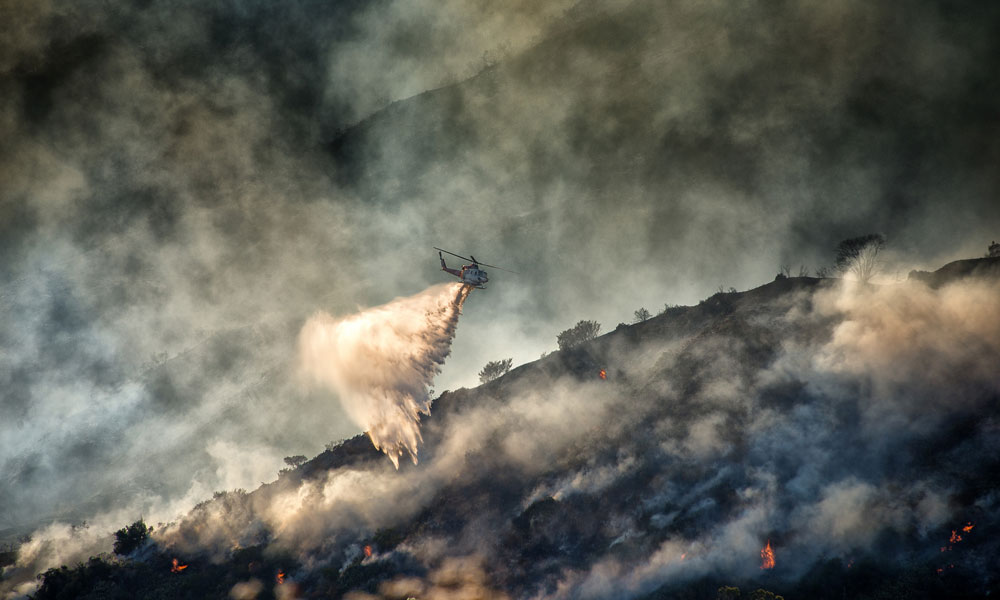
Industry Group Forecasts Winds of Change as Wildfires Rage
New air tankers and helicopters, along with new legislation, are among the tools that could help fight—and fund the fight—against wildfires in the future, according to an official at the American Helicopter Services and Aerial Firefighting Association.
More than 5,200 firefighters are battling the flames from nine different wildfires in California, which have already destroyed more than 98,000 acres and resulted in two deaths. Aerial firefighters are aiding the firefighters on the ground, but the work is extensive and the costs are high.
“One of our members—Neptune Aviation Services—they have every available [air] tanker on the scene fighting fires right now,” said American Helicopter Services and Aerial Firefighting Association (AHSAFA) Executive Director George Hill.
In 2015, a record-breaking 10.1 million acres were burned up wildfires. Last year, the cost of fighting those fires wore a $2 billion price tag, for which the United States Forest Service bore the brunt—spending more than half of its entire budget on firefighting. Some of this was spent on Call When Needed helicopter contracts with AHSAFA members. The midyear re-appropriation of Forest Service funds became known as “fire-borrowing”—and it’s a practice that USDA secretary Tom Vilsack vowed to halt.
“It will be a very interesting year because there is already movement on Capitol Hill to change the way they fund wildfire suppression,” Hill said.
Several pieces of legislation have been introduced to address the funding for fighting wildfires, which is especially prescient given the fact that wildfires, according to The New York Times, are burning longer and earlier. Even this year, the wildfires torching regions in the West and even Alaska are “unprecedented,” said Hill, in their early outbreak.
But advancements in airplane and helicopter engineering should make an impact on wildfire suppression. For instance, AHSAFA member Columbia Helicopters recently launched a helicopter with an internal tank that can contain 2,800 gallons of retardant.
“To our knowledge, there are no other helicopter operators in the world using an internal tank of that size, purpose-built for aerial firefighting,” said Cody Barton, Columbia Helicopters chief flight instructor and command pilot, to AHSAFA. “The system is compatible with water, foam, chemical retardant, or another other agent the USFS might supply.”
Neptune Aviation Services is working to modify commercial airliners to air tankers that can hold a couple thousand gallons of retardant as well.
Once the funding and demand issues are managed, the next hurdle facing this industry might be drones. Drones flying in prohibited areas nearby fires grounded aerial firefighting efforts several times last week in Utah.
(Russ Allison Loar/Flickr)






Comments